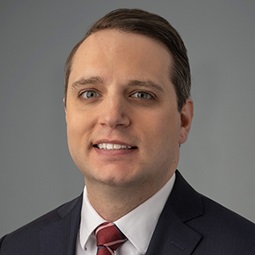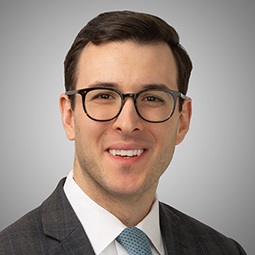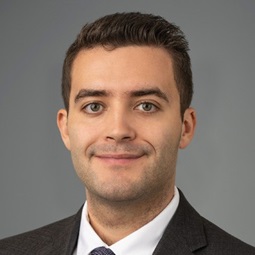Contributed by Kyle J. Ortiz
A recent decision by Judge Bernstein in the long-closed chapter 11 case of truck manufacturer Grumman Olson, In re Grumman Olson Indus., Inc., No. 02-16131 (SMB) (Bankr. S.D.N.Y. Feb. 25, 2011), clarifies the limitations on a buyer’s ability to acquire assets free and clear of successor liability claims under Section 363(f) of the Bankruptcy Code. Section 363(f) authorizes the trustee or a debtor in possession to sell property of a debtor “free and clear of any interest in such property.” An interest in property includes “claims” that arise from the assets being sold. Essentially, § 363(f) authorizes the bankruptcy court to grant in personam relief, similar to the discharge enjoyed by debtors under the code, exonerating a buyer from successor liability, including liability for tort claims. The Grumman decision, however, makes clear that 363(f) does not absolve buyers from successor liability claims by persons who, at the time of the sale, had not yet been injured and had no identifiable relationship to the debtor or its products.
The Grumman Olson chapter 11 case was closed in 2006, but Morgan Olson LLC, the successor to the buyer of the assets in Grumman’s section 363 sale, moved to reopen the case and sought a declaratory judgment and injunctive relief to bar a tort claim arising from an incident involving a Grumman vehicle manufactured prepetition. The claimant, Fredericos, was injured when the FedEx delivery vehicle she was driving hit a telephone pole. Fredericos had sued Morgan Olson alleging it was liable as the successor to Grumman Olson, the manufacturer of the delivery vehicle, under a product-line continuation theory. The bankruptcy court ruled against Morgan Olson, delineating the scope of protection available under section 363(f).
The facts of the case date back to December 9, 2002, when Grumman Olson Industries, a manufacturer of truck bodies, filed its Chapter 11 petition. The following July, Grumman completed a 363 sale of certain of its assets to Morgan Olson’s predecessor. The sale order purported to release Morgan Olson from liability for certain claims, stating that “[t]he sale . . . of the assets to be purchased… shall be free and clear of all . . . claims . . . and other interests . . . whether arising prior to or subsequent to the commencement of this Chapter 11 case.” The sale order went on to say that Morgan as the purchaser would have no liability, responsibility or other obligation of the debtor arising under or related to the asset sale, “including, but not limited to, claims for successor or vicarious liability.”
While the wording of the sale order makes clear that the assets are free and clear of any liability from “claims,” the question faced by the court here was what constitutes a “claim” within the meaning of the sale order, especially with regards to future torts. The answer hinges on whether the claim falls within the definition of a “claim” under section 101(5) of the bankruptcy code. Most courts follow the Eleventh Circuit decision in In re Piper Aircraft Corp., 58 F.3d 1573, 1577 (11th Cir. 1995), which developed a two-part test for when an individual has a § 101(5) “claim” against a debtor manufacturer: (1) if events occurring prepetition created a relationship; and (2) the basis for liability is the debtor’s prepetition conduct in designing, manufacturing and selling the allegedly defective or dangerous product. Under the Piper test, there must be both a prepetition relationship between the injured party and the debtor, as well as prepetition conduct by the debtor in manufacturing or distributing the product. So how do future torts square with this test?
The Second Circuit has previously identified two main categories of future tort claimants: (1) those who were exposed to a product prior to the sale of assets but their symptoms have yet to manifest, the classic example of this sort of claim is asbestos cases; and (2) victims who are uninjured at the time of the sale but are later injured as a result of a defective product that was manufactured prior to the sale. It is this second category that poses problems for buyers in a 363 sale and was the subject of the current dispute.
Consider the hypothetical posed by the Second Circuit in In re Chateaugay Corp., 944 F.2d 997, 1003 (2nd Cir. 1991), a case involving environmental claims:
[A] company… builds bridges around the world. It can estimate that of 10,000 bridges it builds, one will fail, causing 10 deaths. Having built 10,000 bridges, it becomes insolvent and files a petition in bankruptcy. Is there a “claim” on behalf of the 10 people who will be killed when they drive across the one bridge that will fail someday in the future? If the only test is whether the ultimate right to payment will arise out of the debtor‘s pre-petition conduct, the future victims have a “claim.” Yet it must be obvious that enormous practical and perhaps constitutional problems would arise from recognition of such a claim. The potential victims are not only unidentified, but there is no way to identify them… What notice is to be given to these potential “claimants”?
The Chateaugay case adopted a “fair contemplation” test to distinguish between contingent and unmatured claims, which are “claims” within the meaning of § 101(5), and potential future tort claims, which are not. Under that test, a contingent or unmatured obligation is a “claim” if the occurrence of the contingency or future event that would trigger liability could be conceivably contemplated at the time the original relationship between the parties was created. The Court acknowledged that the concepts of “maturity” and “contingency” are not readily transferable to future tort claims whose victims are “totally unaware of injury and a tortfeasor.”
According to Judge Bernstein, Fredericos’ “claim” fails the prepetition relationship test under Piper and falls within the Chateaugay hypothetical. Mrs. Fredericos had no contact with Grumman Olson prior to the accident. She did not deal with Grumman Olson and her only connection was that her employer purchased the truck and she later drove it. Thus, Fredericos did not hold a claim against the debtors at the time of the 363 sale.
In light of these facts, the Grumman Olson court concluded that the sale order did not affect Fredericos’ rights to sue Morgan Olson on a successor liability theory. Of course, she will still have to prove facts demonstrating that she is entitled to relief against the purchaser of assets.
Following Grumman, bankruptcy practitioners must be mindful that potential liability to unidentifiable future claimants may persist despite the “free and clear” language of 363(f). Purchasers of business assets that could give rise to product liability or other tort claims therefore must consider these potential liabilities when determining a fair price for the assets. Otherwise, they will leave themselves exposed to liability if the “bridge” ever collapses.













